

till.com
Don Tillman’s Various Things
Since 1994
News
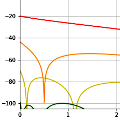
Latest article is:
Distortion Spectra and Small Amounts of Feedback
This is the third in a series of articles on audio electronics. An analysis that shows that small amounts of negative feedback can effectively swap the personalities of parabolic and exponential nonlinearities.

My JavaScript simulation of the Triadex Muse (Marvin Minsky, Edward Fredkin) is part of the AI: More than Human museum exhibit that started at the Barbican Centre (London), and then traveled to the Groninger Forum (Netherlands), the World Museum (Liverpool), the Guandong Science Center (China), and Sede Afundación A Coruña (Spain).
Professional
A substantial career in software engineering from microcode to AI to web technologies. User interface, product design, scientific and data visualization, control system theory, with connections to math, physics, and business.
Plus electrical engineering, digital electronics, digital signal processing, analog circuit design, audio circuitry, electronic music, and synthesis.
Apple, Texas Instruments, Symbolics Lisp Machines, Netscape, Marimba, Riverbed Technologies, and a bunch of startups.
Electronics, Physics, and Math Articles
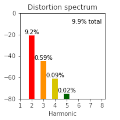 Harmonic Distortion, Odd- and Even-Order
Harmonic Distortion, Odd- and Even-Order
First in a series of articles about audio electronic design, this is a guided tour through odd- and even-order harmonic distortion characteristics with a new visualization.
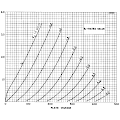 Nonlinearities in Vacuum Tubes, Bipolar Transistors, and Field-Effect Transistors
Nonlinearities in Vacuum Tubes, Bipolar Transistors, and Field-Effect Transistors
Second in the series, an analysis of the nonlinearities and distortion components of audio amplifier devices.
 Distortion Spectra and Small Amounts of Feedback
New!
Distortion Spectra and Small Amounts of Feedback
New!
Third in the series, an analysis that shows that small amounts of negative feedback can effectively swap the personalities of parabolic and exponential nonlinearities.
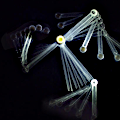 The Kahn Chaotic Pendulum
The Kahn Chaotic Pendulum
A JavaScript simulation of Ned Kahn’s Chaotic Pendulum exhibit at the Exploratorium.
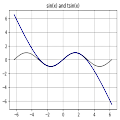 An Improved Sine Shaper Circuit
An Improved Sine Shaper Circuit
A novel mathematical approximation to the sine function. One that is especially easy to implement in analog eletronics.
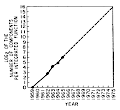 The Mechanics of Moore’s Law
The Mechanics of Moore’s Law
A new article describes the mechanism behind Moore’s Law.
Weirdly enough, silicon is not really involved.
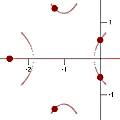 Root Locus Demo of Real Poles with Feedback
Root Locus Demo of Real Poles with Feedback
It is common practice in Systems Theory to take a filter function with a number of poles on the real axis, apply feedback, and the poles move from their original positions, and can jump off the axis into the complex plane. This is described with root locus analysis. I call it pole dancing.
This is an interactive JavaScript demo of the effect.
 Square Wave Variations
Square Wave Variations
Square Waves may appear uninteresting at first... A closer examination reveals the dramatic effects of the polarity and phase of harmonics.
"First of all, what the hell have you been smoking?" — Magnus Danielson
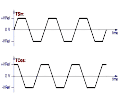 Quadrature Trapezoid Voltage Controlled Oscillator
Quadrature Trapezoid Voltage Controlled Oscillator
A Voltage-Controlled Oscillator (VCO) that can gracefully go through zero Hz to negative frequency is useful for applications such as FM Synthesis and chaotic systems. It’s also a difficult engineering challenge. My solution is a new oscillator topology.
The Doepfer A-100-6 Voltage-Controlled Oscillator is based on this article.
Some quick notes on a circuit I came up that can morph from a sawtooth to a triangle to a reverse sawtooth with a control voltage.
Referenced by:
Dr. Edward Kelly, University of the Arts London, Wavefolding: Modulation of Adjustable Symmetry in Sawtooth and Triangular Waveforms, Proceedings of the International Computer Music Conference 2016
Achim Gratz, Triangle / Sawtooth VCO with Voltage Controlled Continously Variable Symmetry
 An Interpolating Scanner Circuit
An Interpolating Scanner Circuit
Juërgen Haible invented the interpolating scanner. I always appreciated it as an interesting building block for synthesis. This circuit is an alternate approach.
"I would like to thank Don Tillman. Based on my Interpolating Scanner idea, he created a very brilliant implementation of his own, which is more elegant than my first solution in several ways." — Juërgen Haible
Business Articles
’Want to do something different? Over the last decade or so I’ve put myself in a mindset where, when confronted with an everyday problem or frustration, I pause to consider the opportunities for a marketable solution or business possibility.
This actually happens a lot. So I try to keep an active list of them here.
 Startup Proposal: Intelligent Traffic Signals
Startup Proposal: Intelligent Traffic Signals Autonomous intelligent traffic signals have the potential to significantly reduce traffic congestion, fuel consumption, and exhaust emissions. Here are the details.
The music industry doesn’t really have a business model right now. Here is how record companies can actually win big over the next couple decades.
I wrote this a long time ago, and it’s a little long winded, but the result is still applicable.
Guitar Physics and Electronics Articles
 Part 1: Response Effects of Guitar Pickup Position and Width
Part 1: Response Effects of Guitar Pickup Position and WidthPart 2: Response Effects of Guitar Pickup Mixing
Part 3: Pickup Response Demonstration
In an acoustic guitar, any vibration eventually works its way down the string, through the body, and out. In an electric guitar, the pickup only senses the string movement in one location along the string in a specific way.
This is a set of articles that analyze the spectrum of electromagnetic guitar pickups due to physical parameters, such as the position of the pickup along the string, the width of the magnetic aperture, and how multiple pickups interact when mixed. Part 3 is an interactive graphical JavaScript demo.
These articles have been referenced in:
Paiva, Pakarinen, Välimäki, Acoustics and Modeling of Pickups, Journal of the Audio Engineering Society, October 2012.
Kirk McDonald, Princeton University, Physics Examples — Electric Guitar Pickups.
Mohamad, Dixon, Harte, Pickup Position and Plucking Point Estimation on an Electric Guitar , Journal of the Acoustical Society of America, 2017
Henri Penttinen, Acoustic Timbre Enhancement of Guitar Pickup Signals with Digitial Filters
 A Discrete FET Guitar Preamp
A Discrete FET Guitar PreampAn FET Preamp Cable
This is the original discrete FET guitar preamp circuit that has become known as the "Tillman Preamp".
It can also be phantom-powered and built into a 1/4-inch phone plug.
Electronic Music Articles
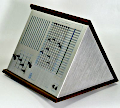 Triadex Muse in JavaScript
Triadex Muse in JavaScript
Triadex Muse in JavaScript, Museum Edition
The Muse (with synchronized multiple Muses)
The Muse was a digital algorithmic music composer invented in 1969 by Marvin Minsky and Edward Fredkin at MIT. It was built with the digital logic circuitry of the day; gates, registers, and counters. Working units are extremely rare.
This is a software simulation of The Muse that runs in a browser.
"Muse in a browser, this is awesome folks!!" — Margaret Minsky
"This is so frigging great - possibly my favorite soft-synth" — numan7/muffwiggler
The JavaScript Muse is part of a museum exhibit called AI: More than Human starting at the Barbican Centre in London, and various stops thereafter. It will be running on a tablet next to a physical Muse, so vistors can see the real thing, and try out the simulation.
 Psych Tone in JavaScript
Psych Tone in JavaScript
Don Lancaster created a variation of The Muse called the Psych Tone and published the project as the cover story in the February 1972 issue of Popular Electronics Magazine. Psych Tones are rarer than Muses.
So this is a software simulation of Don Lancaster’s Psych Tone that runs on a web page.
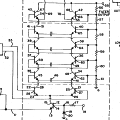 Moog Synthesizer Patent Reviews
Moog Synthesizer Patent ReviewsARP Synthesizers Patent Reviews
Mellotron/Chamberlin Patent Reviews
Back in the 90’s, when IBM’s Almaden Research Center scanned all the patents and made them available online, I searched through the patents for some of the major electronic music companies, studied them, and wrote up a lot of patent reviews. These included a description of the invention, why it was significant, what products used it, and their cultural impact.
 A Palette of Static Audio Waveforms
A Palette of Static Audio Waveforms
Bored with audio oscillator waveforms? Me too. Here is a musically powerful palette of waveforms, including two that did not have names before.
Replace a Rhodes Chroma power supply with a modern switching unit.
Mellotron resources, notes, projects, the Mellotronists mailing list and the tale of a restored M400 with Mike Pinder’s autograph.
Music
Everything the Bay Area progressive rock musician or fan needs; concert listings, bands, venues, and lots of other resources. Created in 1999, it was the first regional prog rock music site.
And...
I was blogging for a while. ‘Gave it up. I’d rather write articles.
